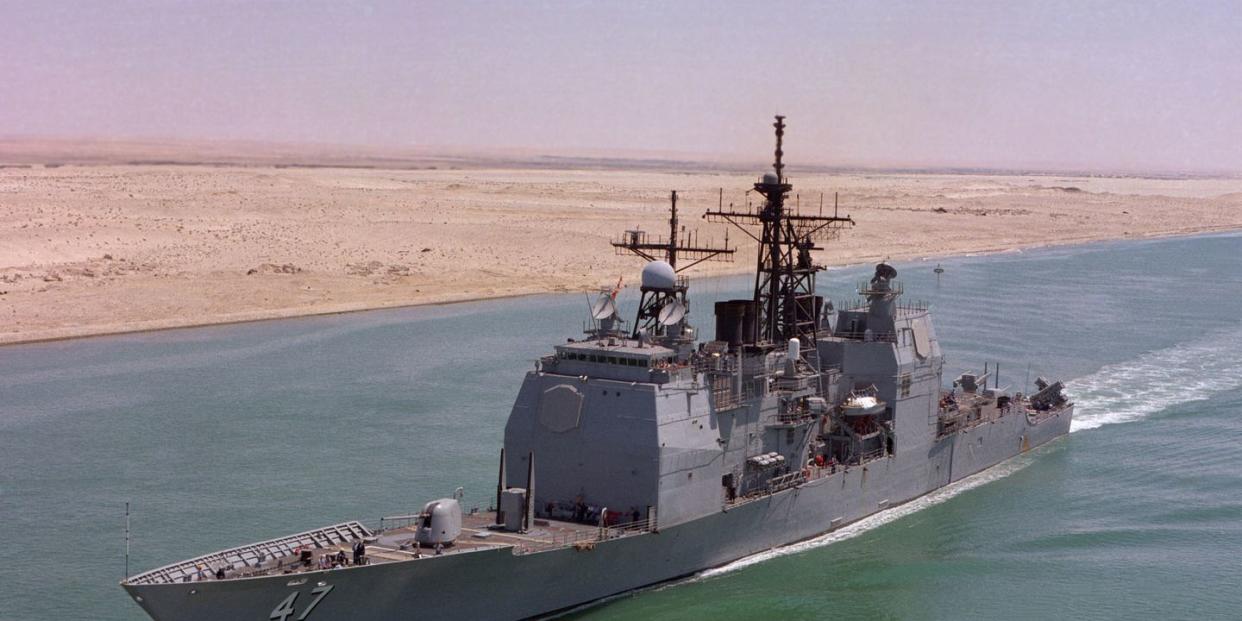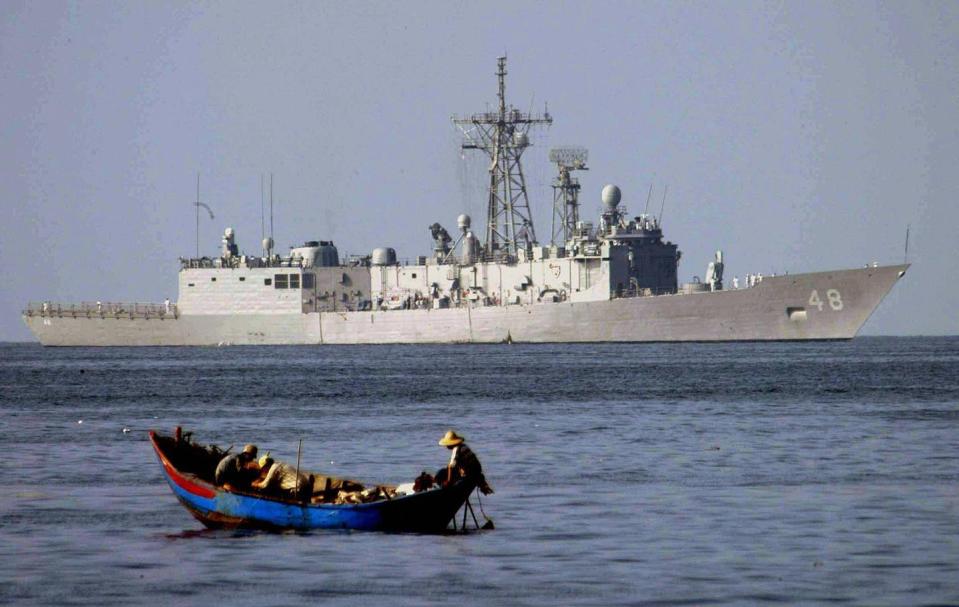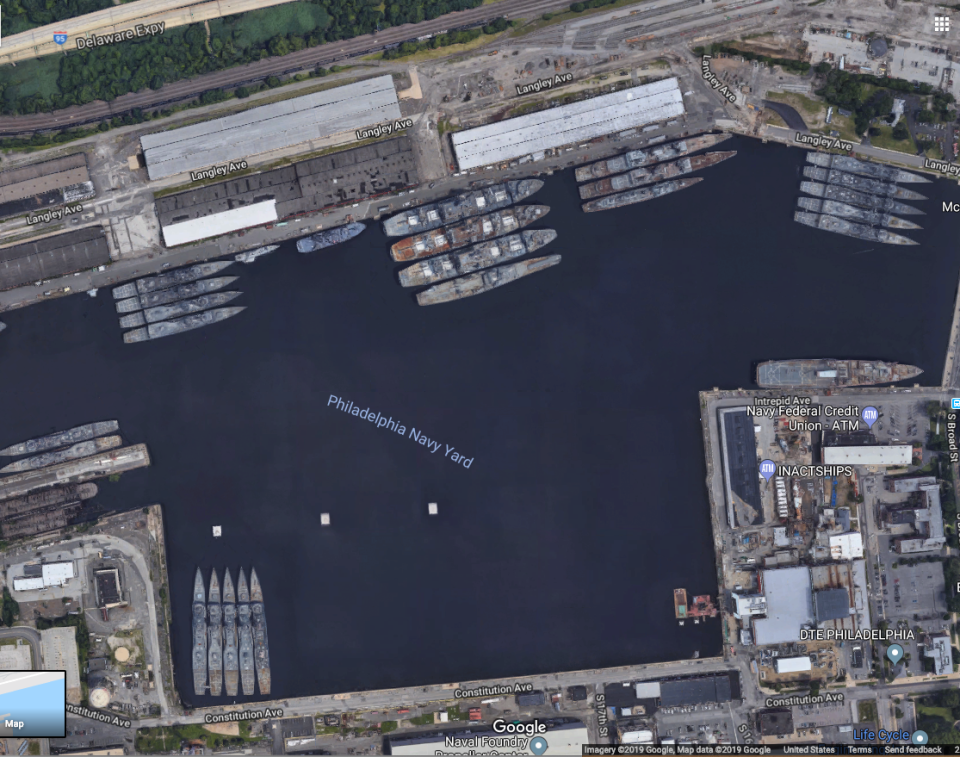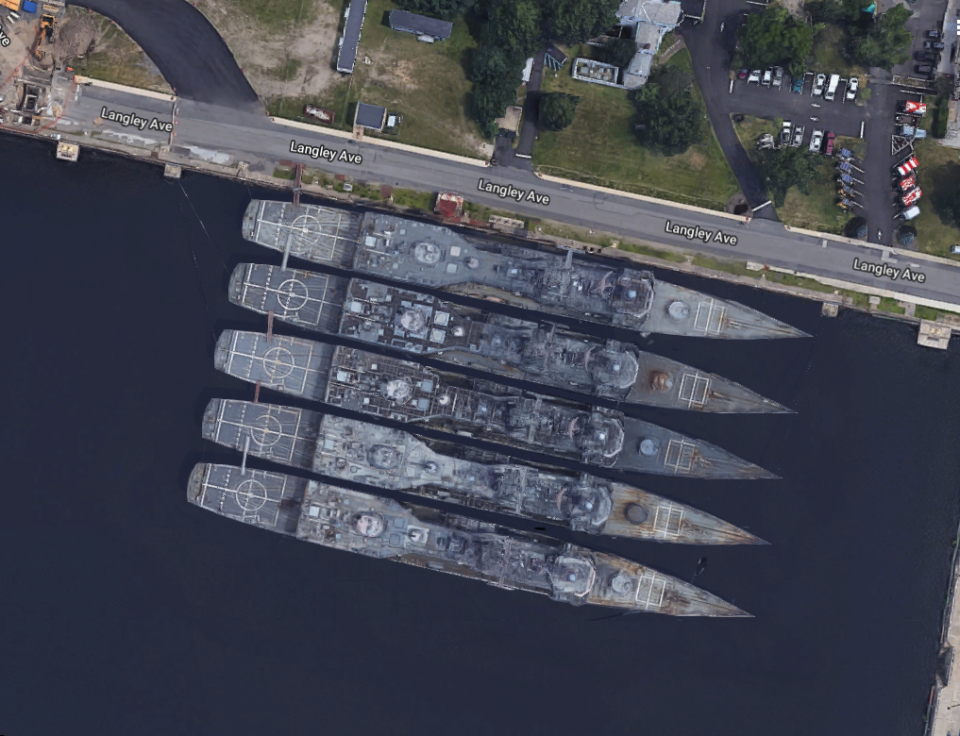The U.S. Navy Won’t Bring Back Mothballed Ships to Boost The Fleet

The U.S. Navy won’t bring back decommissioned ships as a way to grow the fleet. The ships, decommissioned from the Navy after decades of service, are rusting away at a number of “mothball fleet” locations across the United States. Navy officials have concluded it would be too expensive to bring them back and they would offer too few capabilities to make them worthwhile.
According to Military.com, Vice Admiral Tom Moore said the service had taken a look at decommissioned vessels and concluded it just wasn’t worth it. Not only are the ships old, some have been cannibalized to keep existing ships still in the fleet running. The Navy says the current fleet of 288 ships is too small for the service’s global responsibilities and is looking to boost the fleet to 355 ships by the 2030s.
Moore told the press the Navy looked at every ship on the “inactive” list, particularly retired Oliver Hazard Perry-class guided missile frigates. The Perry class was a small multipurpose warship capable of anti-submarine warfare, and self-defense against anti-air threats. Each could carry up to two Seahawk helicopters. The Perrys could operate independently but could also travel as part of a carrier battle group, adding anti-submarine capability.

The U.S. Navy built 51 Perry frigates, but all have been decommissioned. Most of them were scrapped, sunk and turned into fish habitat, and transferred abroad to U.S. allies. Less than twenty are sitting in mothballs in Bremerton, Pearl Harbor and Philadelphia, awaiting their ultimate fate.
The U.S. Navy has a long tradition of keeping ships after they leave Navy service, parking them in quiet corners of navy bases and letting them quietly rust. The so-called “mothball fleet” shrank dramatically over the past two decades, from a high of several hundred ships after the Cold War to less than fifty today. The ships are held in reserve for national emergency, but in most cases they just end up sitting around for several years before being scrapped or sold abroad.

Today, the mothball fleet is maintained at Bremerton, Washington, Philadelphia, and Pearl Harbor. There are three Perry-class frigates at Bremerton plus the aircraft carriers Kitty Hawk and Enterprise, and their age and cost means the carriers will absolutely not come back. Philadelphia has 15 Perry-class frigates, a pair of older Ticonderoga-class cruisers (see headline image), and a handful of old amphibious ships. Pearl Harbor has three Perrys, five amphibious ships, and what appears to be a pair of old fleet support ships, likely oilers or ammunition ships. The Ticonderogas are likely the ships being cannibalized as there are still approximately 22 newer versions of the cruisers still in service.

A look at the three mothball fleets in Google Maps reveals why the Navy won’t bring these ships back. There is so much rust on some of them it is visible from space. In order to bring back these ships to active duty, the Navy would have to spruce them up, add modern communications and electronics, and ensure they are safe to put to sea in. That could end up costing tens of millions per ship. To make matters worse the Perry-class frigates lost their missile launchers in the 2000s as they became obsolete. Unless the ships were renovated with new launchers, boosting their refurbishment cost, the largest weapon on the ship would be the 76-millimeter rapid fire gun.
The Navy has formally put the kibosh on zombie ships rejoining the fleet. The frigates can still be useful, sent to the bottom during SINKEX exercises where they can become fish habitat.
Source: Military.com
('You Might Also Like',)

